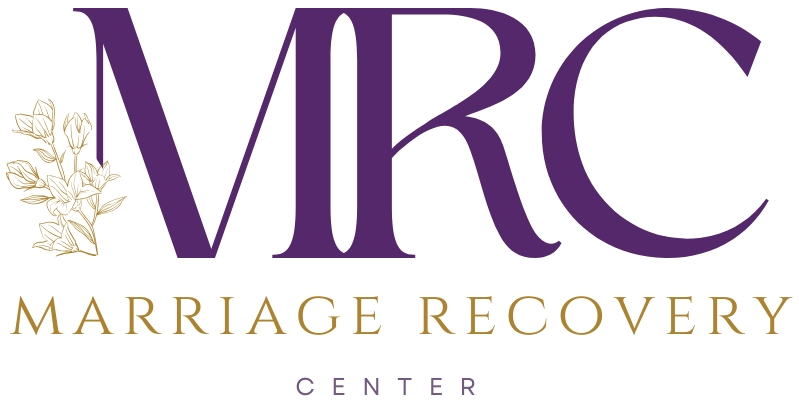Leigh Ann is the Marriage Recovery Center’s Eye Movement Desensitization Reprocessing (EMDR) Specialist, with extensive training and experience in trauma recovery. She recently sat down with the center’s Director Dr. David Hawkins to discuss how to use EMDR to overcome trauma in order to help hundreds of clients break free of trauma, PTSD, depression, anxiety and even chronic pain.
How to Use EMDR to Overcome Trauma
In this article, we will explore Leigh Ann’s journey into the field of counseling and her expertise in using Eye Movement Desensitization and Reprocessing (EMDR) as a powerful tool for overcoming trauma. Trauma can take various forms, from big T to little T, and EMDR offers an evidence-based approach to help individuals process and heal from past experiences.
Understanding Big T and Little T Trauma
Trauma is a complex and pervasive issue that can manifest in various forms, often categorized as big T and little T trauma. Leanne Fernandez explains that almost no one can reach the age of third grade without experiencing some form of little T trauma. Little T trauma refers to situations that alter an individual’s beliefs about themselves, typically not threatening their safety but negatively affecting self-esteem.
For example, a teacher’s comment about smiling too much or peer interactions can lead to such changes. These early experiences can instill self-doubt and influence behavior patterns. Little T trauma can lead to adaptations and coping mechanisms that alter the course of one’s life.
Leigh Ann highlights that big T trauma can have a similar impact on a person’s life. Whether it’s abuse, violence, or other significant traumatic events, individuals adapt to protect themselves. These adaptations can manifest in various ways, such as avoidance, aggression, or other defense mechanisms. In both big T and little T trauma, the brain’s primary role is to ensure safety, which can lead to lasting psychological effects.
Eye Movement Desensitization and Reprocessing (EMDR)
Leigh Ann introduces EMDR, which stands for Eye Movement Desensitization and Reprocessing. EMDR is an evidence-based therapeutic approach used to help individuals process traumatic memories and experiences. It is not a form of hypnosis, and individuals remain fully conscious throughout the sessions. EMDR employs a mechanism of bilateral stimulation, often using eye movements, taps, or tones, to facilitate the reprocessing of traumatic material in the brain.
The “reprocessing” aspect of EMDR involves altering the way an individual perceives and responds to traumatic memories. During EMDR sessions, therapists work with clients to target specific traumatic memories, beliefs, and sensations that negatively affect their daily lives. The therapy aims to desensitize the emotional charge associated with these memories, ultimately leading to a more adaptive perspective.
The Role of EMDR in Healing Trauma
The core principle of EMDR is to help individuals break free from the emotional and psychological bonds of trauma. EMDR can be a life-changing experience for those who have struggled with traumatic memories or beliefs for years or even since childhood. The process involves reprocessing these memories in a way that allows individuals to view them from a more adaptive and mature perspective.
In EMDR therapy, the client and therapist collaborate to target specific traumatic memories or beliefs that impact the client’s daily life. Rapid eye movements, taps, or tones are used to stimulate the brain bilaterally, mimicking the processing that occurs during REM (Rapid Eye Movement) sleep. This bilateral stimulation helps the brain reprocess traumatic material, which can lead to profound changes in how individuals perceive themselves and their past experiences.
One of the most remarkable aspects of EMDR is that it requires minimal follow-up work. Clients attend EMDR sessions and follow the therapist’s guidance, and after the session, they often find themselves transformed, no longer burdened by the weight of traumatic memories and beliefs.
Benefits of EMDR Therapy
The benefits of EMDR therapy are profound and far-reaching. This evidence-based approach to trauma recovery has a proven track record of helping individuals heal from both big T and little T trauma. Here are some of the key benefits of EMDR therapy:
- Rapid Results: EMDR therapy often leads to significant improvements in just a few sessions. It allows individuals to address trauma efficiently, making it a valuable tool for those who want to see quick progress in their healing journey.
- No Need to Maintain Work: Unlike some therapies that require extensive homework or ongoing efforts, EMDR typically doesn’t require clients to maintain their progress after the session. The changes in perception and behavior happen automatically.
- Emotional Freedom: EMDR helps individuals break free from the emotional shackles of trauma. It neutralizes the emotional charge associated with traumatic memories, allowing individuals to live more fulfilling lives.
- Increased Self-Awareness: EMDR encourages a deeper understanding of oneself and one’s past experiences. It allows individuals to make peace with their past and let go of self-limiting beliefs.
- Enhanced Ability to Cope: Individuals who have experienced trauma often develop maladaptive coping mechanisms. EMDR enables them to develop healthier ways of coping with challenges and stressors.
- Improved Relationships: EMDR can positively impact personal relationships by addressing the root causes of emotional distress and triggers, leading to healthier and more fulfilling interactions with others.
How to Begin Your EMDR Journey
If you’re considering EMDR therapy to overcome trauma, you can start by reaching out to a qualified EMDR therapist. Leigh Ann Fernandez, as part of the Marriage Recovery Center, offers her expertise in this field. It’s important to remember that EMDR can be integrated into your existing counseling or therapy, allowing you to target specific traumatic memories or beliefs.
Leigh Ann Fernandez emphasizes that EMDR is not a form of hypnosis, and clients remain conscious throughout the process. The therapy involves bilateral stimulation, typically using eye movements, taps, or tones, to reprocess traumatic material in the brain.
The benefits of EMDR are significant, and it has helped countless individuals find emotional freedom and healing from the burden of trauma. If you’re experiencing the ongoing impact of trauma in your life, EMDR may be the key to your transformation and healing.
In conclusion, Eye Movement Desensitization and Reprocessing (EMDR) is a powerful and evidence-based therapeutic approach that can help individuals overcome trauma, whether it’s big T or little T trauma. Leigh Ann Fernandez’s expertise in EMDR offers a path to emotional freedom, self-awareness, and improved coping mechanisms. If you’re ready to break free from the shackles of your past experiences, EMDR may be the solution you’ve been searching for. Don’t hesitate to reach out and begin your journey towards healing and personal growth with EMDR therapy.
To learn how we can help, reach out to us at (206) 219-0145 or info@marriagerecoverycenter.com to speak with a Client Care Specialist
Also read: The Underlying Emotional Abuse in the Marriage
About Dr. Hawkins:
The internet is inundated with hyperbole and misinformation about narcissism, leaving many people confused and hopeless. Get the facts on narcissism and emotional abuse from someone who has been researching, writing about and treating narcissism and emotional abuse for over a decade.
Dr. Hawkins is a best-selling author and clinical psychologist with over three decades of experience helping people break unhealthy patterns and build healthier relationships.
He is the founder and director of the Marriage Recovery Center and the Emotional Abuse Institute which offers education, training and counseling for people who want to break free of, and heal from, emotional abuse. Whether the perpetrator of the abuse is your spouse, partner, parent, boss, friend or family member, we offer practical advice for anyone trapped in a toxic, destructive relationship.
In addition to narcissism & emotional abuse, you’ll learn about the lesser known forms of abuse, including covert abuse, reactive abuse, spiritual abuse, secondary abuse, relationship trauma and much more.








